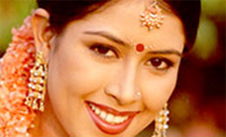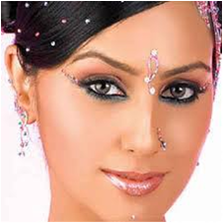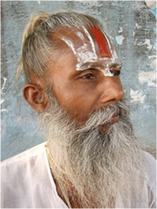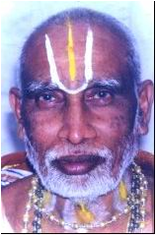| A Brief Introduction to Hinduism |
Dress
Facial Decorations
|
TilakTilak is a vermillion sindoor mark that is typically only used on formal occasions. The shape, color, type of paste used, and size can indicate one’s caste and chosen deity. The Kshatriya class wears a red mark, like the one pictured to the right. Vaishyas wear a yellow mark, pictured right and below. Sudras wear a black tilak.
|
Women's Dress
Sari
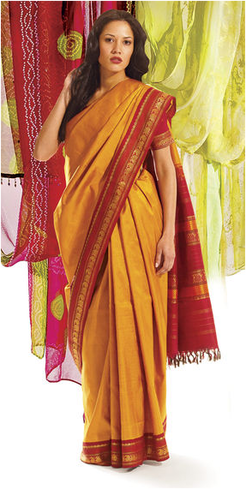
The sari is a long, and often richly colored and embellished, piece of silk fabric that women wrap over their bodies. Typically, the embellishments on saris harbor Hindu symbols such as lotus flowers, which symbolize beauty and fertility, or even depictions of the gods themselves. Traditionally, saris are worn for formal occasions, especially weddings, where brides will spare no expense for a richly decorated, beautiful sari and other ornaments.
Shalwar Kameez
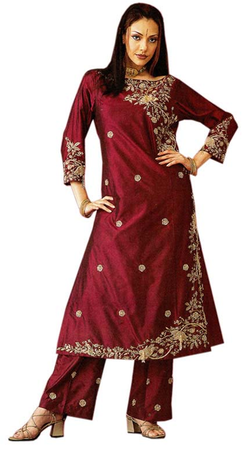
The shalwar kameez is a long, dress-like tunic worn by women in place of a sari. Like the sari, the shalwar kameez are also extravagantly embellished and made from rich fabrics. The shalwar kameez is a modern alternative to the traditional sari, and can be seen on many Hindu women in everyday life, especially in business-related events.
Men's Dress
Sherwani
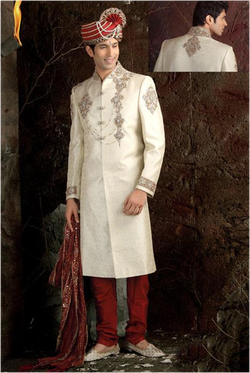
The sherwani is formal version of the kurta. It features a thicker and higher quality fabric that is always ornately decorated with Hindu symbols or deities. The sherwani is also used with a formal headdress that matches the sherwani itself, and a sari-like drape. The sherwani is used solely for formal events, such as weddings or formal parties.
Kurta
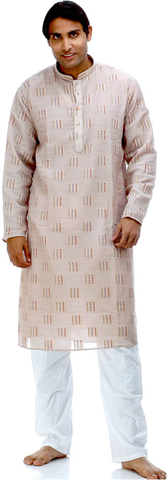
The Kurta is a long tunic somewhat like the women’s shalwar kameez. Although it is almost always ornately decorated, the kurta is mostly used for informal events and leisure activities.
In addition to these, in modern India the western suit is an everyday outfit for business and semi-formal events. Although the western suit is not the most fashionable there because of its plainness versus the decorations of the kurta or sherwani, the western suit is typically worn at work for professionals.
Sources:
http://www.ncolonie.com/ESL/India%20Culture.html
http://www.shadi.com/shadi-trends/shadi-sharwani.aspx
Sources:
http://www.ncolonie.com/ESL/India%20Culture.html
http://www.shadi.com/shadi-trends/shadi-sharwani.aspx
